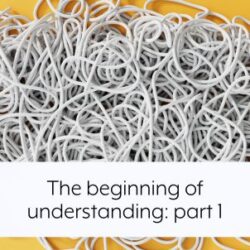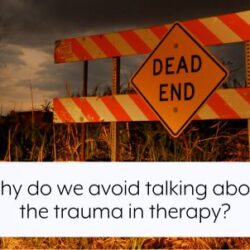
Dissociative identity disorder in therapy
Ten years is a long time in therapy. The therapist can learn a lot in a decade.
In 2000 I met my first client with dissociative identity disorder (DID). I was completely unprepared for the onslaught of love and horror. We worked with her internal chaos with mutual bewilderment and devotion. I kept meeting someone different: another age, another gender, another language. More and more parts. Why? What could have happened to her? What was I supposed to do? This wasn’t madness, or make-believe; it was real. My heart and mind had to expand their capacity, and the journey has been ongoing.
I felt very on my own. Books, research, training were ‘on their way, coming’ as they say where I lived in Africa. Yet survivors of childhood trauma and neglect were beginning to dare to hint at their suffering. Psychotherapists began to believe. Society is taking longer.
It began to dawn on me that the folk with dissociative identity disorder I was meeting led hidden lives. They were competent, skilled, and talented. They drove cars, raised children, had careers, and led ‘apparently normal’ lives. Their dissociation was carefully hidden, explained away.
Understanding dissociative identity disorder as a therapist
I clawed at anything I could to try and understand. I went to a lecture by Ellert Nijenhuis, which was way above my head at the time, so I bought his slides and his ground-breaking book The Haunted Self. It was a new, and eminently sensible, way of looking at ‘parts’. It proposed that some parts deal with daily life, some parts deal with the trauma, and ‘never the twain shall meet’. Which worked fine, until the trauma parts refused to stay locked up. He called those who coped with daily life the ANPs—the Apparently Normal Parts. The ones who held the trauma he called EPs—the Emotional Parts.
I began to understand: the worse the trauma, the greater the number of parts. With dissociative identity disorder, the ANPs could be numerous—one to go to work, one to drive the car, one to go to church, one to deal with a social life, one to run the family. And I began to understand too that they may or may not know about each other, and that they may or may not know about the trauma and abuse.
The EPs were harder to understand, until I trained in Sensorimotor Psychotherapy. Slowly I began to understand about trauma—that it overwhelms the body and the brain, that its effects are universal, impacting each of us in similar ways. It is a normal, biological response, but the consequences are most severe when experienced repeatedly at an early age, especially with neglect or inadequate parenting. I began to understand my clients better. I began to understand dissociative identity disorder better.
It’s all about survival.
How trauma shapes the brain
And I began to understand, too, that the brain is shaped by trauma, that it adapts to it and is moulded by it. We have evolved from being hunter-gatherers whose survival was on the line day in day out, and we developed brain-body strategies to stay alive: friend, fight, flight, freeze, flop. With ‘friend’ you attempt to attach, to run to someone bigger and stronger, someone who will protect you. But what if that safe person, the secure base, is the one harming you? You try to fight back, but you’re too small and you can’t win. You try to run, to flee, but you can’t escape. You freeze and feign death, but even that doesn’t stop the abuse. So you flop, submitting totally, whatever the cost.
Each team of parts, with their own particular strategy, has a different agenda, and very possibly different opinions within the same team. Team Fight wants to slog it out physically or verbally. Team Flight wants to get out of there, and fast. Team Freeze is caught, suspended, in that moment of trauma, and wants to remain invisible and unmoving. Team Flop will do whatever you ask of them. Team Friend may hold the casting vote as the one who needs attachment and has to keep the therapist close. The simplicity of the order and organisation in the apparent chaos labelled ‘dissociation’ was revolutionary for me.
Fight, flight, freeze, flop, friend
I began to seek to understand the parts I was meeting with this paradigm. What might Team Fight look like? No nonsense. Confrontational. Aggressive. Teenage. Male. Saboteur. Vengeful. Swearing. Threats. ‘Don’t mess with me.’ They get things done, make things happen. Even if at first they were antagonistic towards me, they were pivotal to healing and must be respected. I also began to see how unbelievably brave they were: fight takes a lot of courage.
Team Flight has a different strategy. They want out. Escape. Run. Their behaviours are obsessive. They are addicted to drink, drugs, sex. Their nose is in a book, their head in a computer game, running away mentally. To cope with the sense of entrapment, they dream of suicide and amass a pile of pills. Team Flight began to make sense to me as I recalled my own experience as a young girl home from boarding school. Being chased by a gang of girls from the village, I have never run so fast, panted so hard or leapt fences so well. But being able to flee meant that I had no lingering ill-effects, like the survivors who ran from the burning towers on 9/11 and did not develop PTSD.
Team Freeze is the brakes. At top speed and still accelerating, an emergency stop. Stunned. Stuck. Paralysed. The main consequences lie in the meaning the child makes of this moment of trauma when they are helpless and overpowered: ‘I can’t do it’, ‘I don’t know what to do’, ‘I’m on my own.’ In that paradox of impossibility, Team Freeze drops like a trapped animal, apparently dead. And the icy fingers of powerlessness reach through into our adult lives still: ‘I don’t know how to do it’ has disabled me all my life, until I recognised it as the blended freeze part within me that was stuck in frozen trauma from when I was six and first went to boarding school, separated from home and family.
Team Flop is all-out submission, a last resort. Often there are numerous members of this team, sharing out the trauma when there’s no choice left. Maybe one takes the pain; one performs the sex; one accepts the insults; one counts the leaves on the tree; one watches helplessly; one floods with shame as the activating emotion essential for submission. The submit parts multiply to cope if they have to hurt others. A counsellor working with young cancer patients told me that some are unable to bear the treatment and cannot submit to it. They choose palliative care, knowing that they will die. Submission is a survival response. My clients needed to dissociate at those moments just to survive. Team Flop doesn’t have the easy option, or the weak option. At that moment of trauma, they take the only option.
But submission can be misunderstood. The child must please and obey in order to survive—the fear and dread, even the pain, is otherwise all-consuming. But it may look as if they are ‘begging for it’. Nothing could be further from the truth. The young boy, hearing his stepfather’s footsteps, is so terrified and helpless that he has an erection. It’s not about desire. But the stepfather says it is, twisting the truth, shifting the blame. The young girl feeling that hand up her nightie cannot move. This is not consent, this is frozen trauma. The parts who submit often hate themselves, and hate their bodies too. They are consumed with self-loathing. They take all the blame and responsibility. They may be too ashamed to come to therapy. Or mute. Others cope by having a sense of superiority, that they were chosen, and feel entitled because they are ‘special’. Some parts feel the pain; others don’t.
Team Friend is all about attachment, connection and belonging. They work to ensure they are not abandoned. They cry, ‘I want my Mummy.’ They do anything for approval, for the love that is a child’s birthright. If it doesn’t come, they assume there is something wrong with them. They try and try and try to be better, to be good. Connection and belonging is their lifeline, and they are adrift without it. The most devastating words are ‘It was my mother.’ Such pain, such betrayal of trust, while all the time the family insists on loyalty above all else. It is an unwise therapist who criticises the parents: then all attachment-based parts, loyal to the family, pop up with denial as their defence. What is an hour of therapy compared to attachment to good mummy and trauma bonds? Therapy is not about creating orphans.
All these different strategies, in different teams, within one person: the competition between Team Fight and Team Friend alone is at the level of an internal civil war. I began to understand how important it is to recognise each part and understand what it did to survive. I began to realise that I needed to mediate between the parts, and work with utmost diplomacy. But I make mistakes often, and misattune.
Usually it happens just when I feel that we are getting somewhere. I began to search for more answers, and they came in the form of therapies such as Richard Schwartz’s Internal Family Systems. He stresses the importance of the work of ‘protector’ parts. These act as the buffer between the functioning parts (ANPs) and the traumatised parts (EPs). Schwartz teaches that if we work with the traumatised, exiled parts too soon, without permission from the protector parts, then the latter will cause havoc and close the therapy down in an effort to stay safe.
He calls these protector parts ‘firefighters’: they are fighting the fires caused by going too far, too fast. They cut, they take overdoses, they get lost—anything to flag up an emergency or crisis and to slow things down, to stop the ANPs and EPs from knowing about each other. The protector parts, as guardians and managers, have spent their entire lives channelling all of their energy into ensuring that these parts know nothing of each other. Their job is to ensure that the functioning parts stay functioning.
Protector parts
I have had significant conversations with protector parts. I have explained that the role they have taken has been important and that what they have done for the person as a whole has served a vital purpose. For instance, one protector part made sure that the parts who coped with having sex kept on making themselves available so that the person as a whole would not be tortured or punished for not complying. I explained that this was a valuable role but that it had become unhelpful as things had changed now and life had moved on.
I explained that those parts no longer needed to make themselves available for sex, that the abusers had gone, and sex with strangers was no longer appropriate. I asked the protector part to try to keep the parts who coped with sex to stay inside. He promised to consider it.
It took much longer for me to understand introjected perpetrator parts. A client explained it to me. You’re five years old, you’re humiliated and beaten. You can’t stop the abuse, so a part comes to side with the perpetrator, to be like him/her, to behave the same. It affords a sense of power in the powerlessness. The five-year-old then isn’t the one who gets hurt—he is the one who does the hurting. So he is called Lucifer, Satan, Fuck-off, Dark. There are other introjected parts: mother, uncle, neighbour, grandmother, grandfather parts—anyone too terrifying. I saw this with one particular part, Snarl. Some other parts were destroying a toy that belonged to him. I asked why. They replied that none of them liked Snarl because he bit them. As I grew to know Snarl and I heard about the cruel, horrific things done to him around dogs, I began to understand why he became a dog and identified with the leader of the pack. It wasn’t mad or crazy for him to do this. It made perfect sense and so we worked together on understanding it as a brilliant way to survive. Then one day he told me he would like to do drawing rather than biting. He understood that he no longer needed to be a dog because the abuse was over.
Parts as a whole
Parts make up the whole, but so often they operate independently, each coming from their own perspective, their own survival strategy. I get that but my capacity baulks at having to recognise that adults will deliberately train a child for their use. They use spinning, torture, hypnosis, they withhold affection, and they mingle it all with sweets and treats. Programmed parts robotically answer the phone, open the door, go out on a certain day, switch at a certain touch, or at particular numbers or words. With programmed parts there’s much more for me to understand. But I continue to be humbled by the courage and tenacity of these parts, all of them with their own way of surviving, each of them managing the best way they know how. That might be by managing daily life as the ANPs, by being a protector to keep the ANPs functioning, or by holding the most unimaginable horrors of the EPs by strategies of friend, fight, flight, freeze or flop. Dissociative identity disorder truly is a creative survival mechanism.


